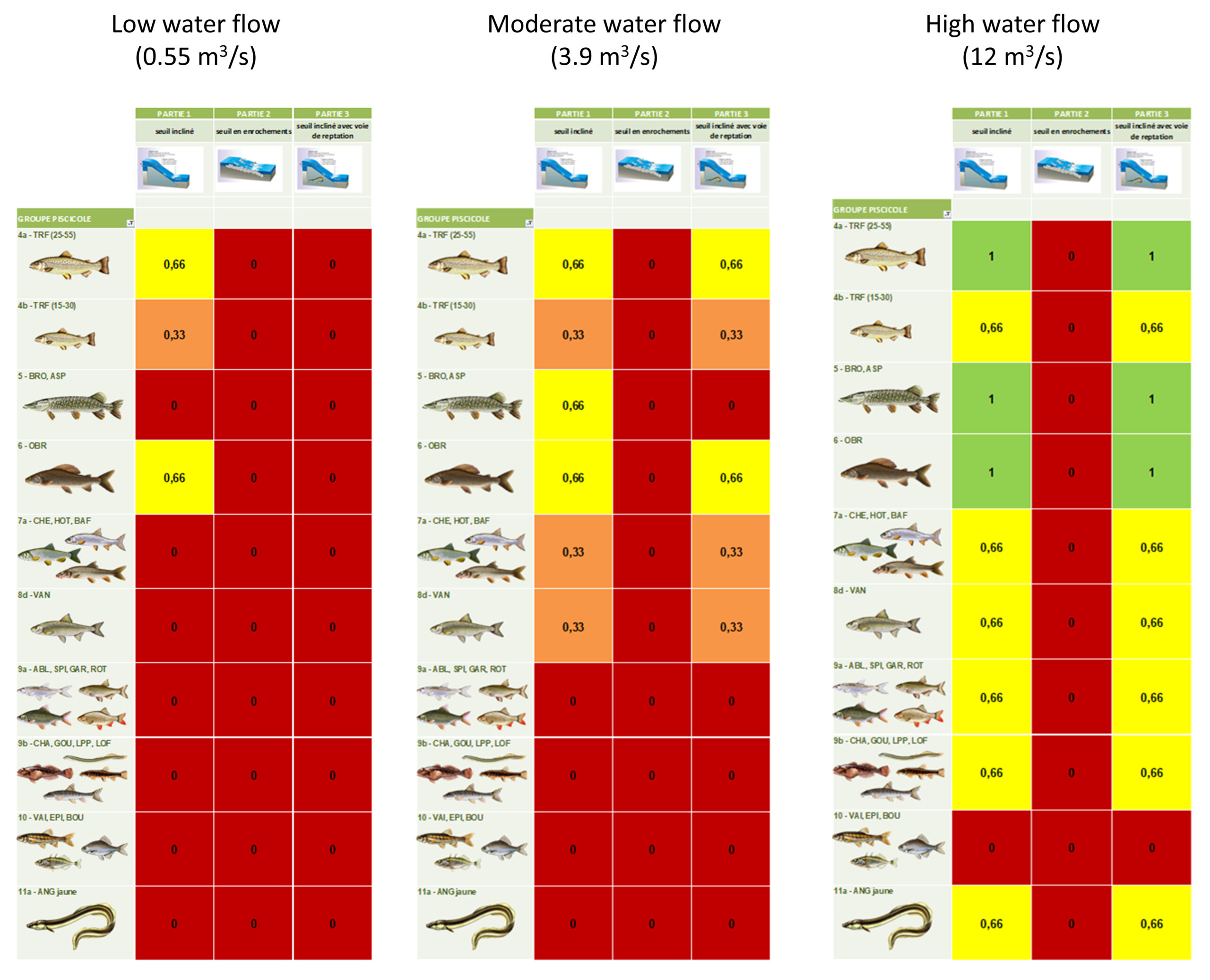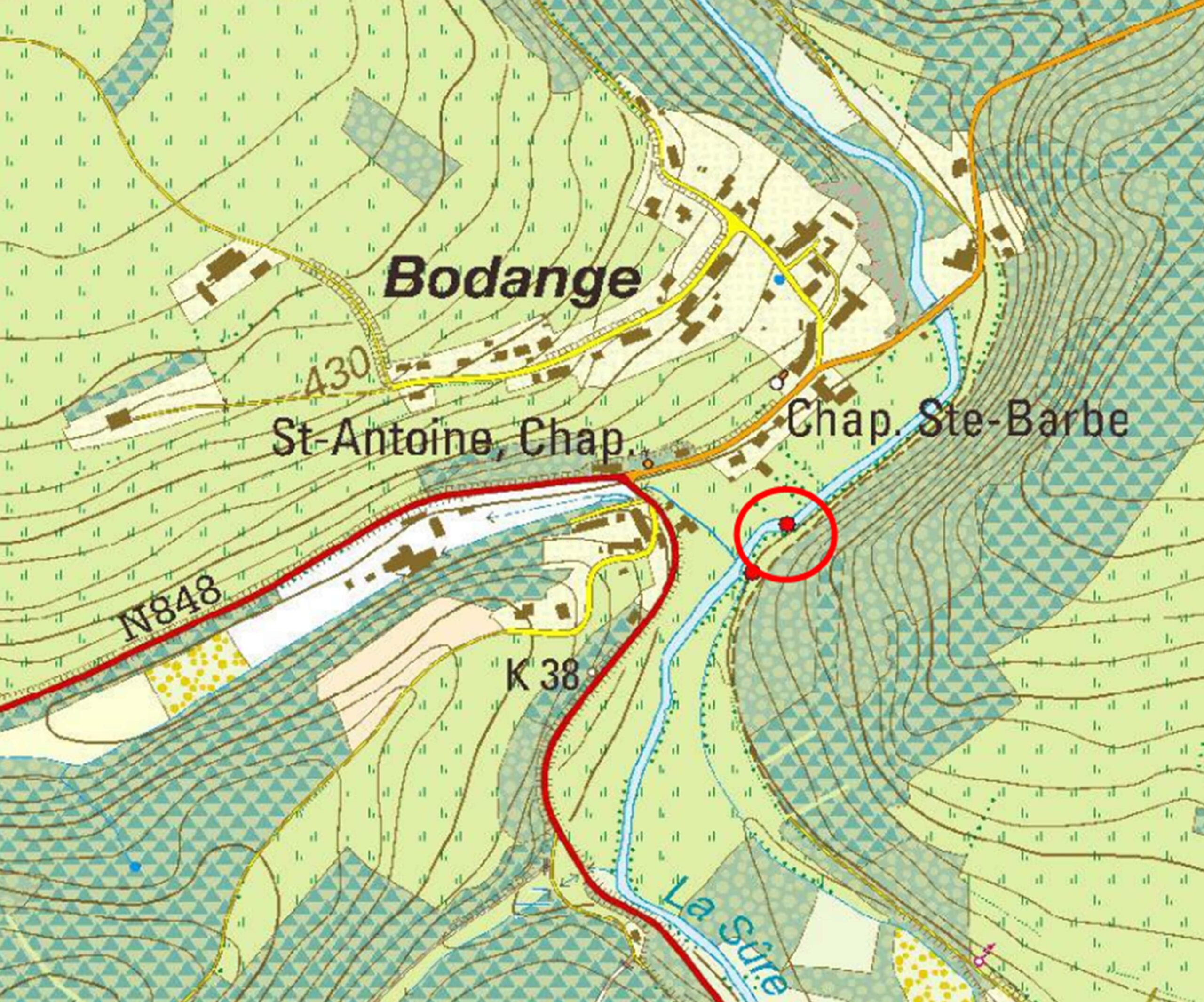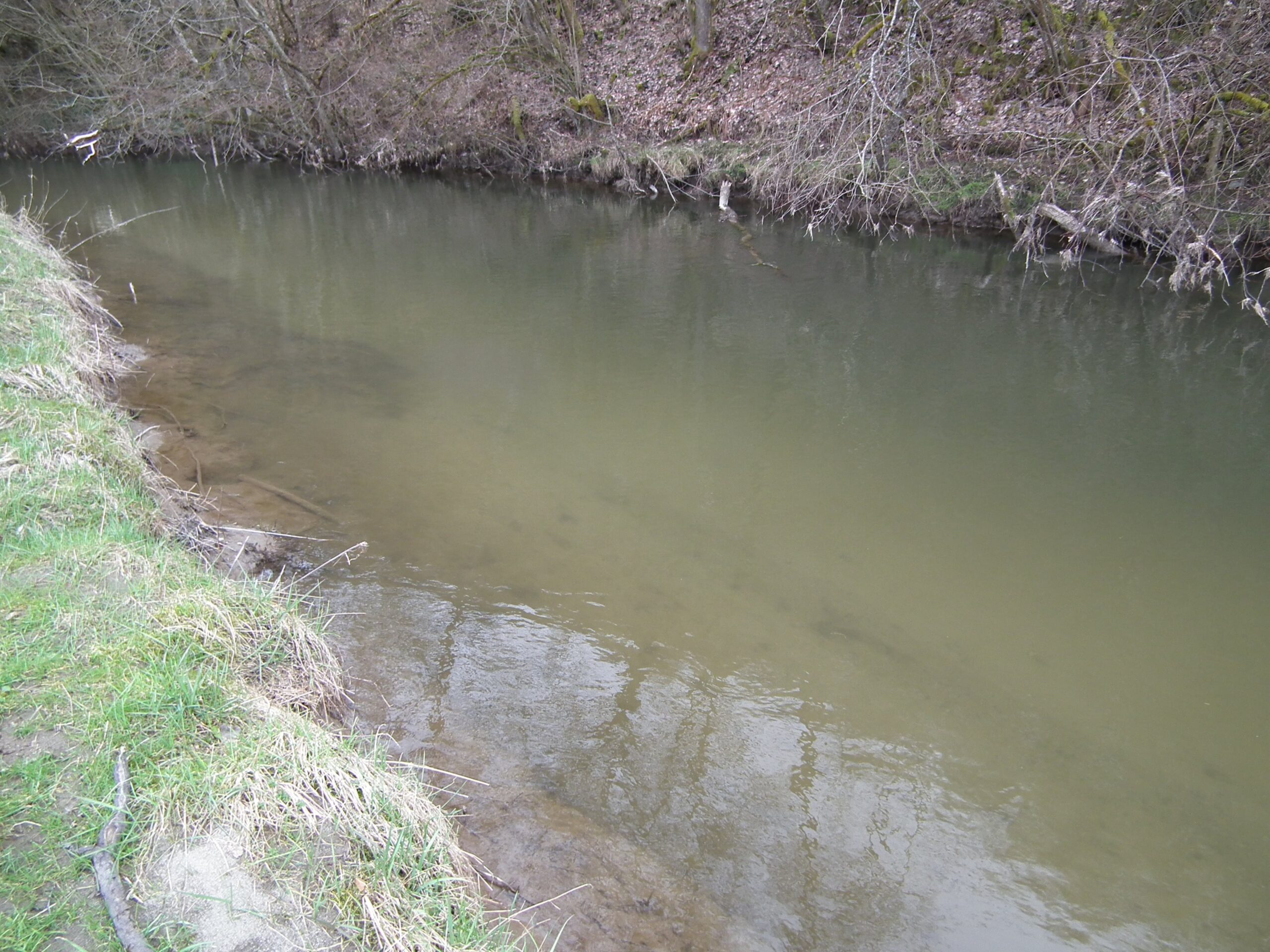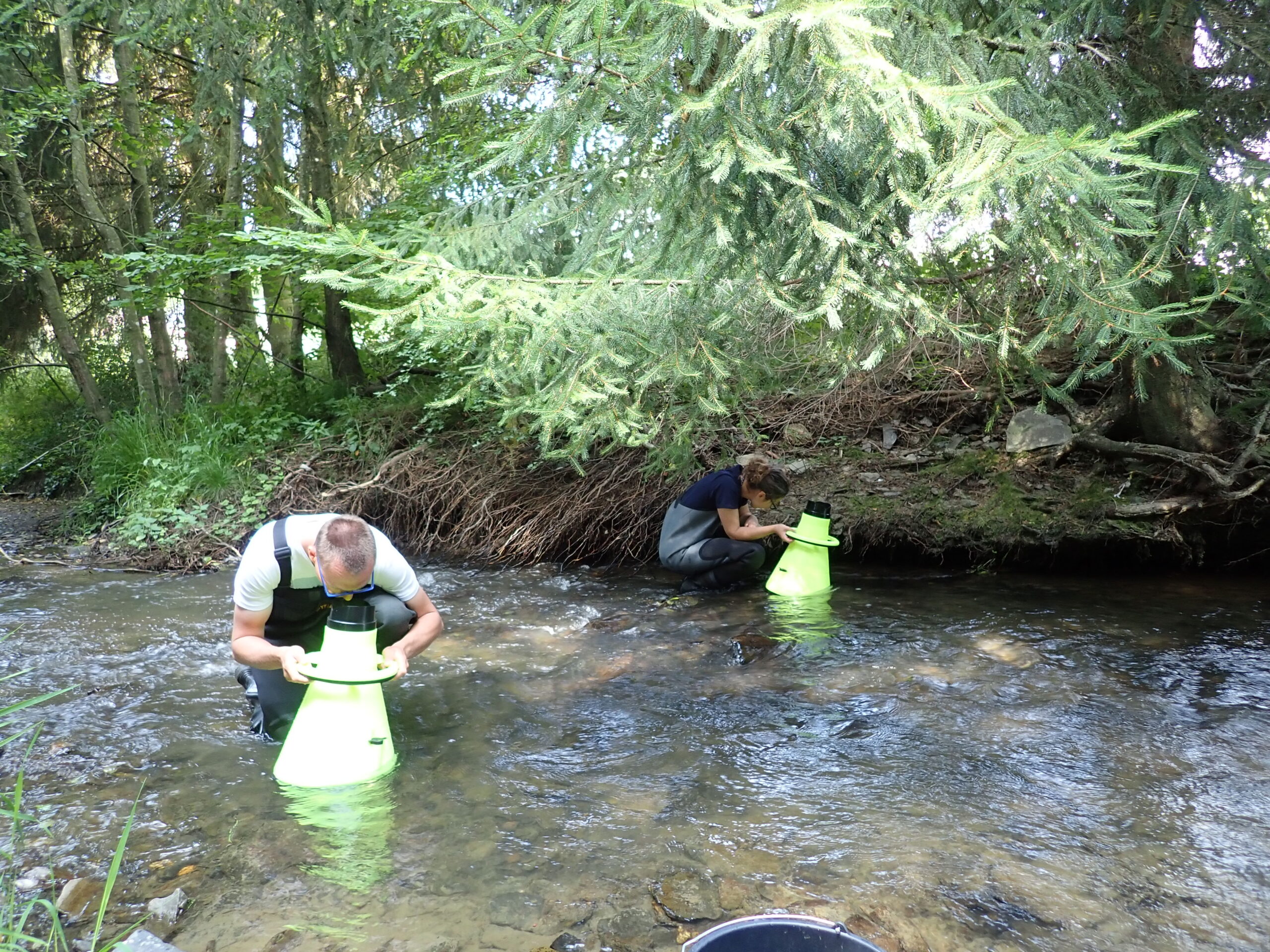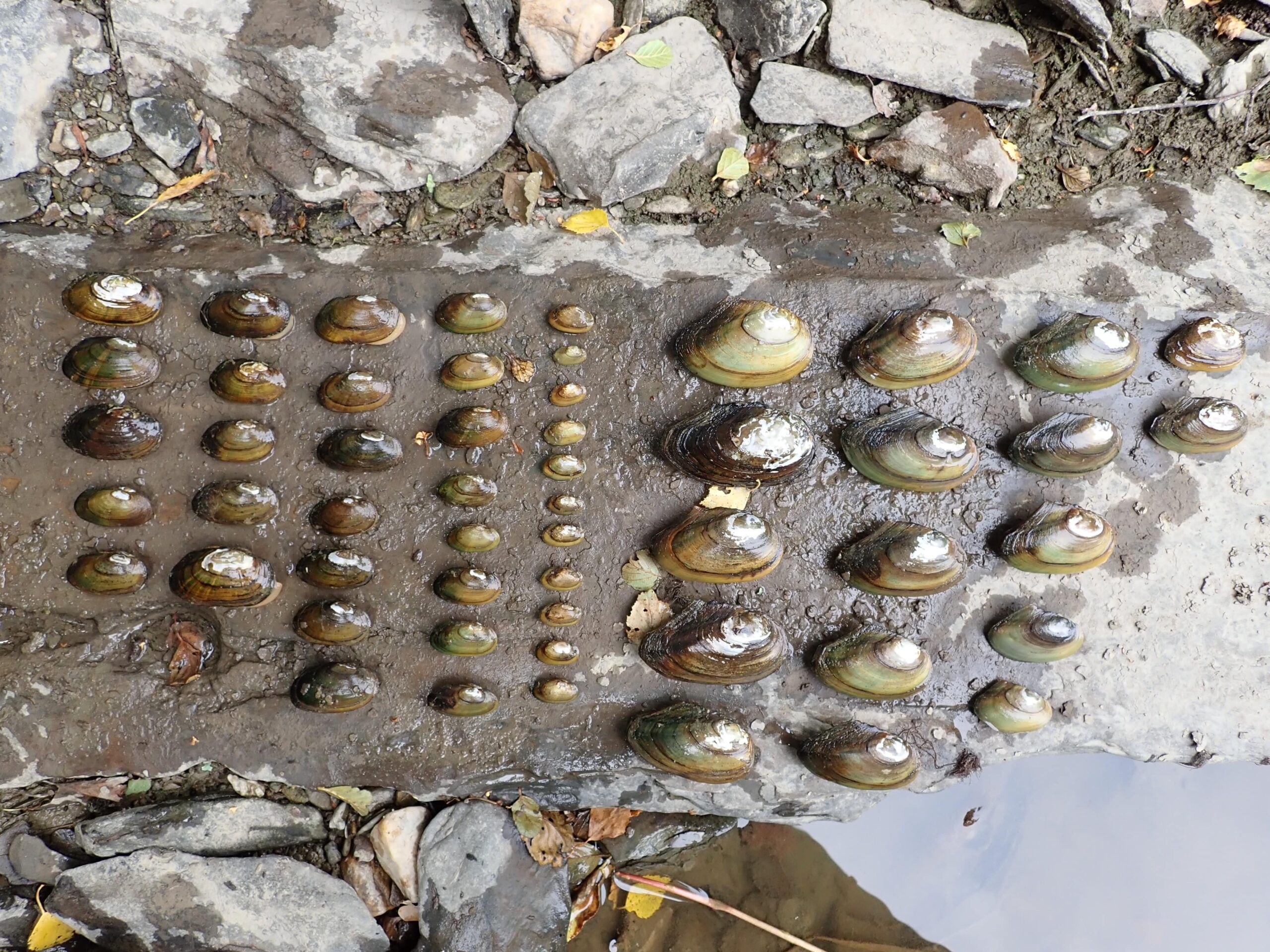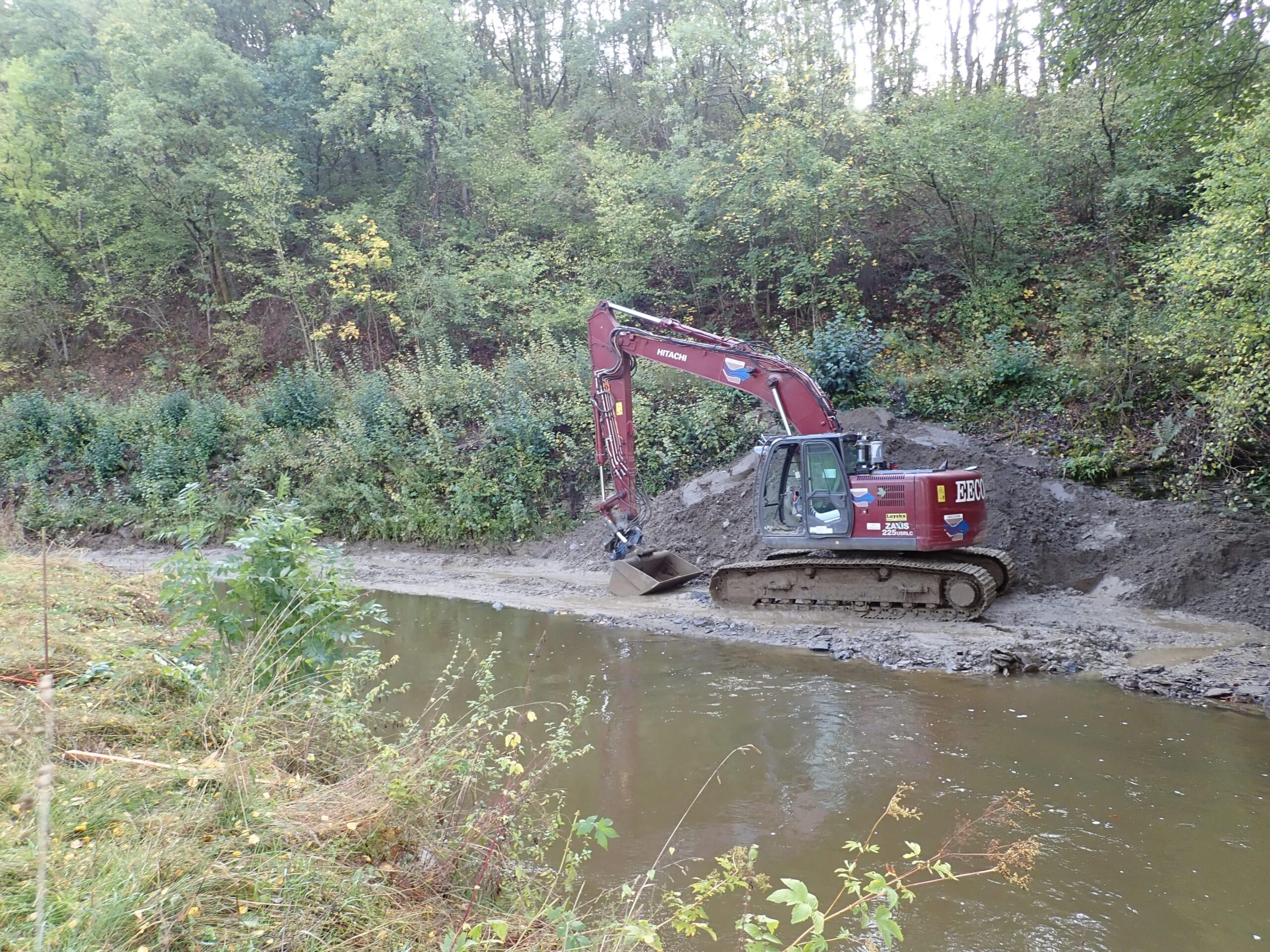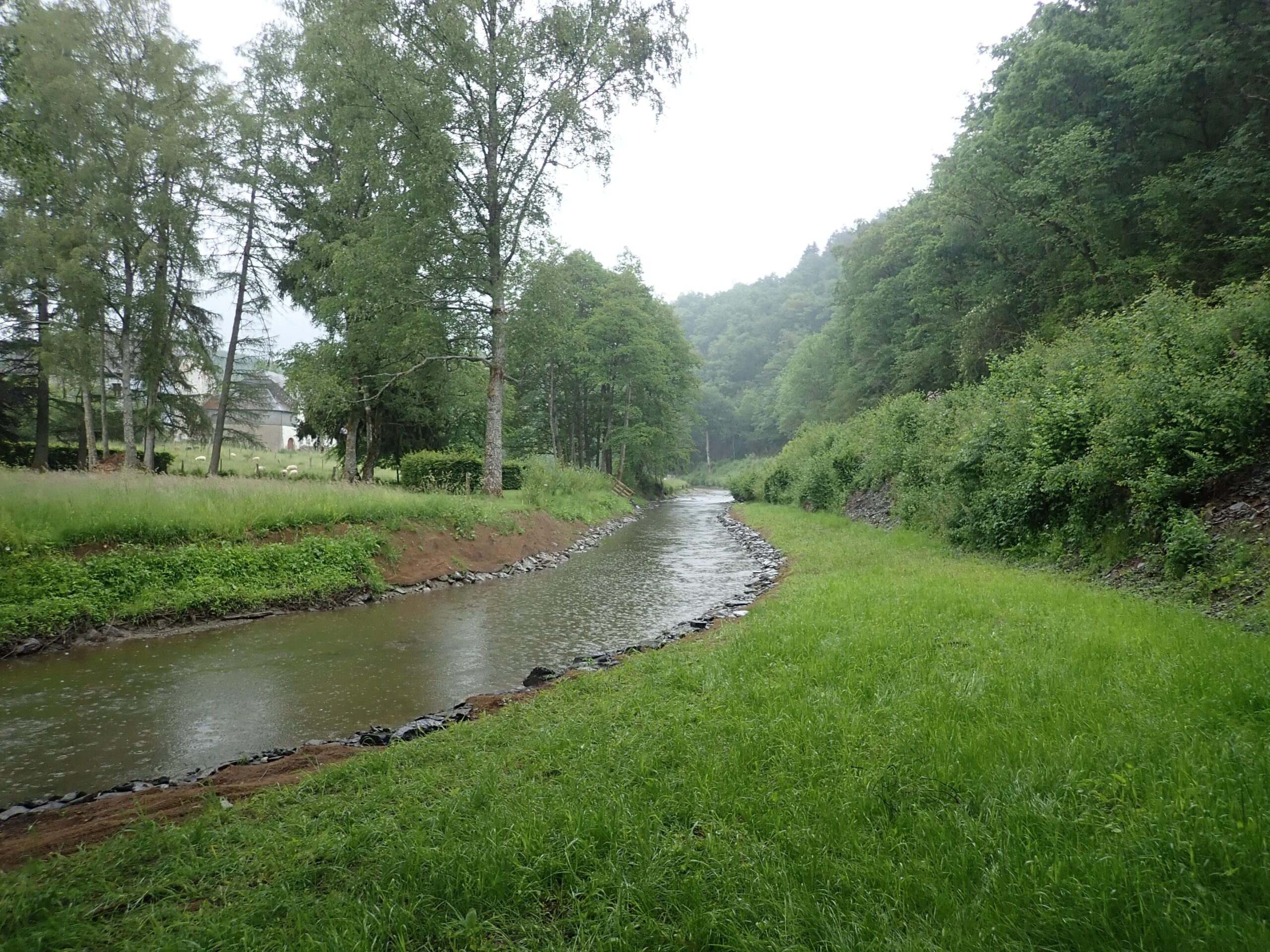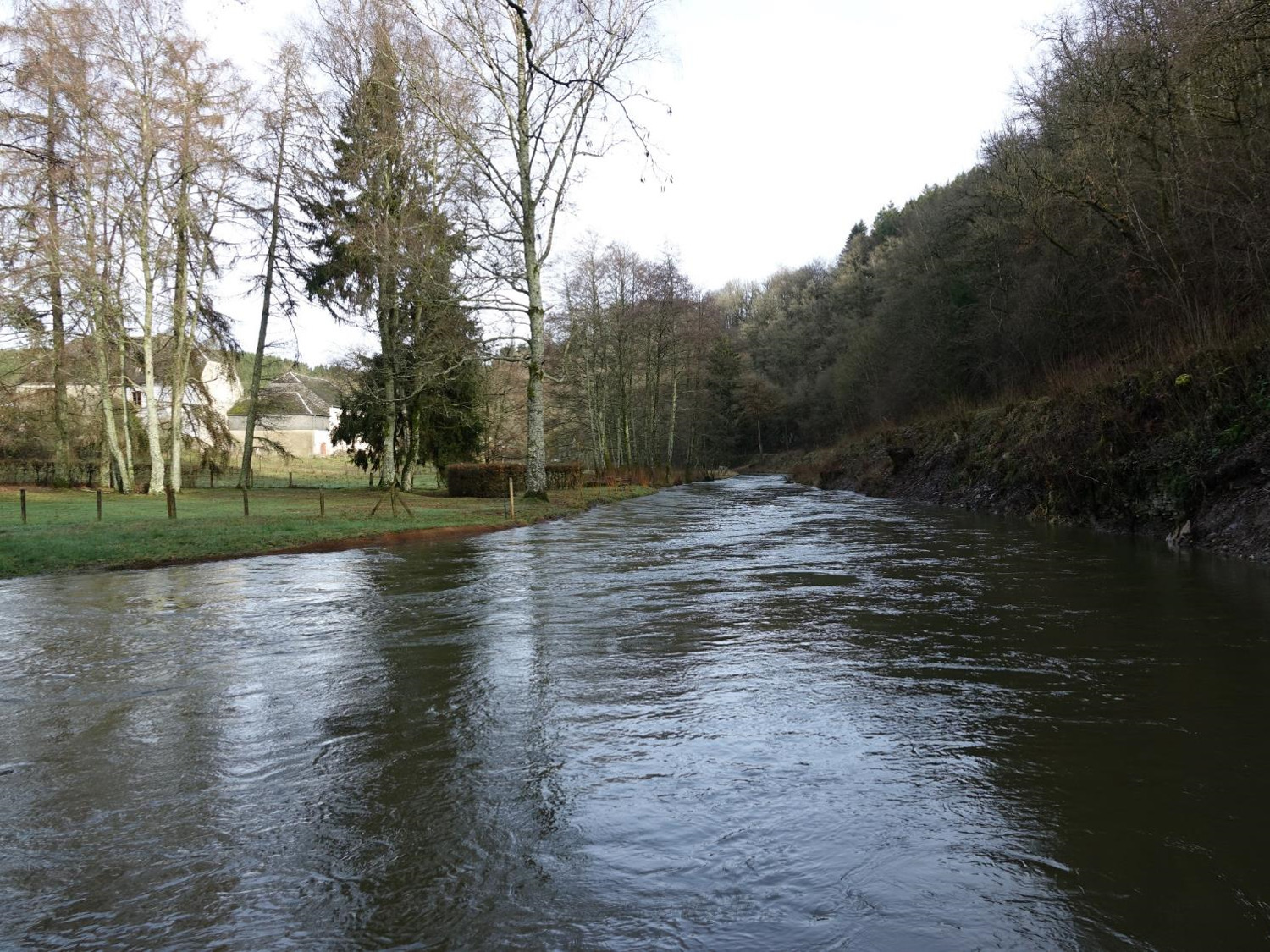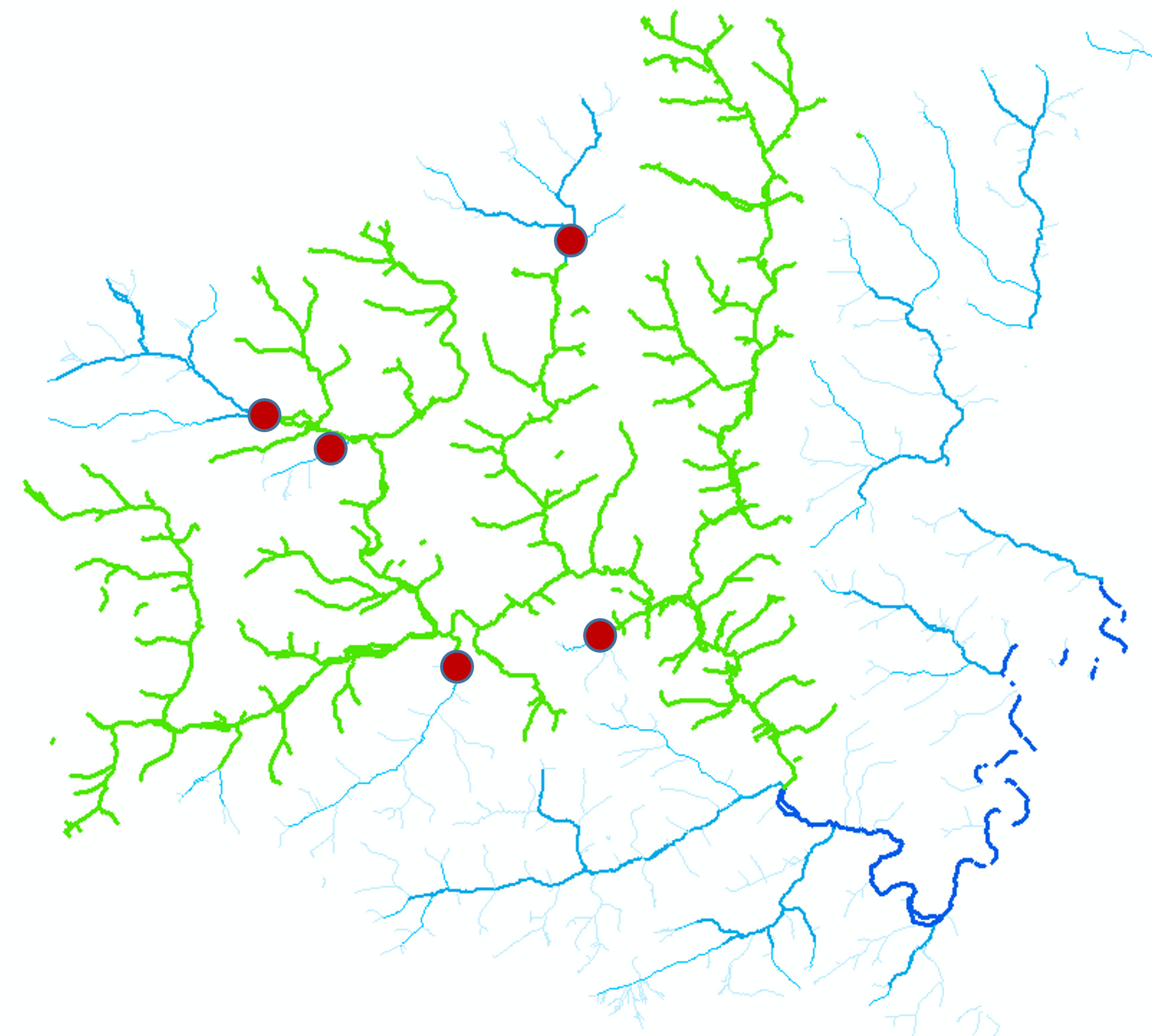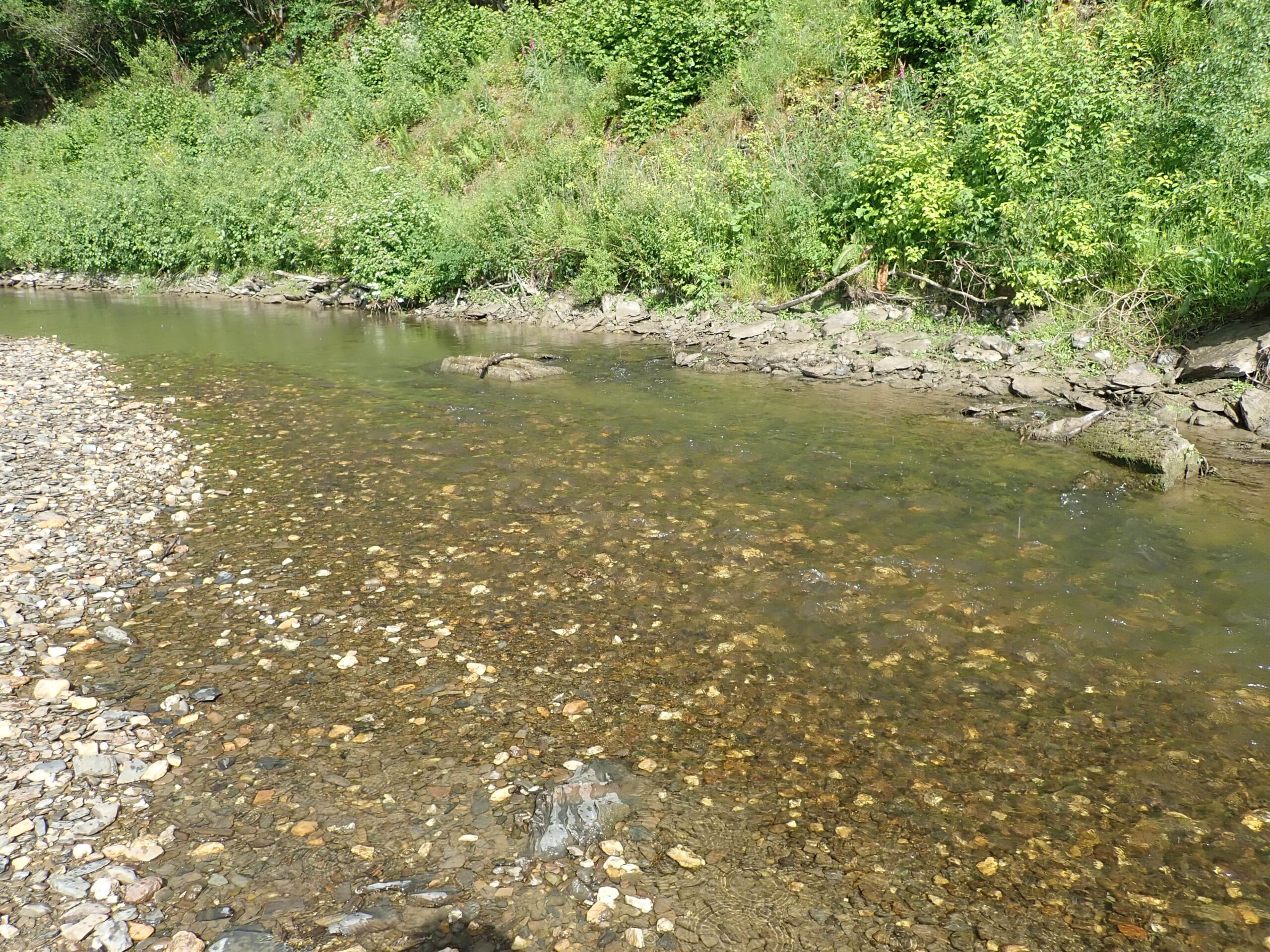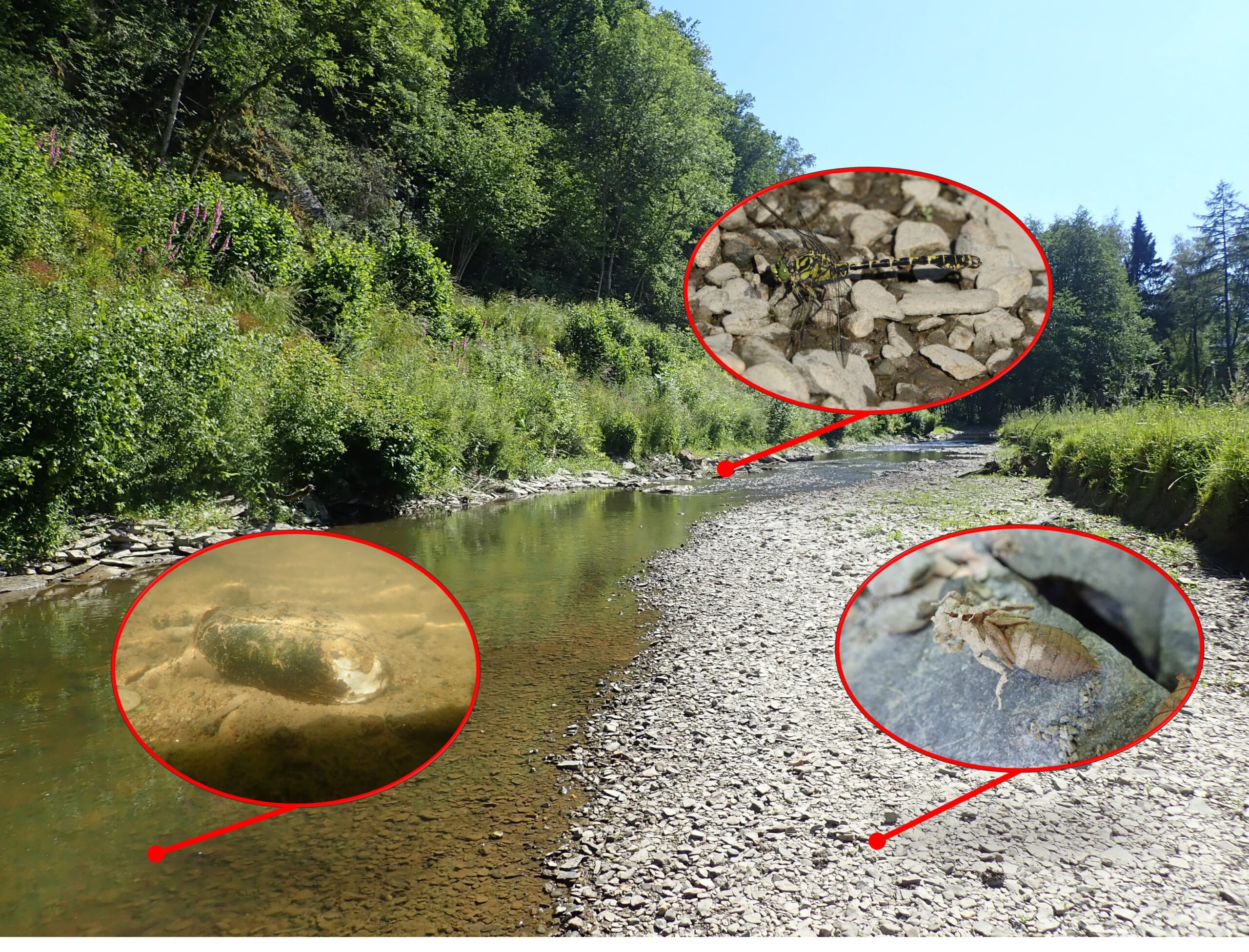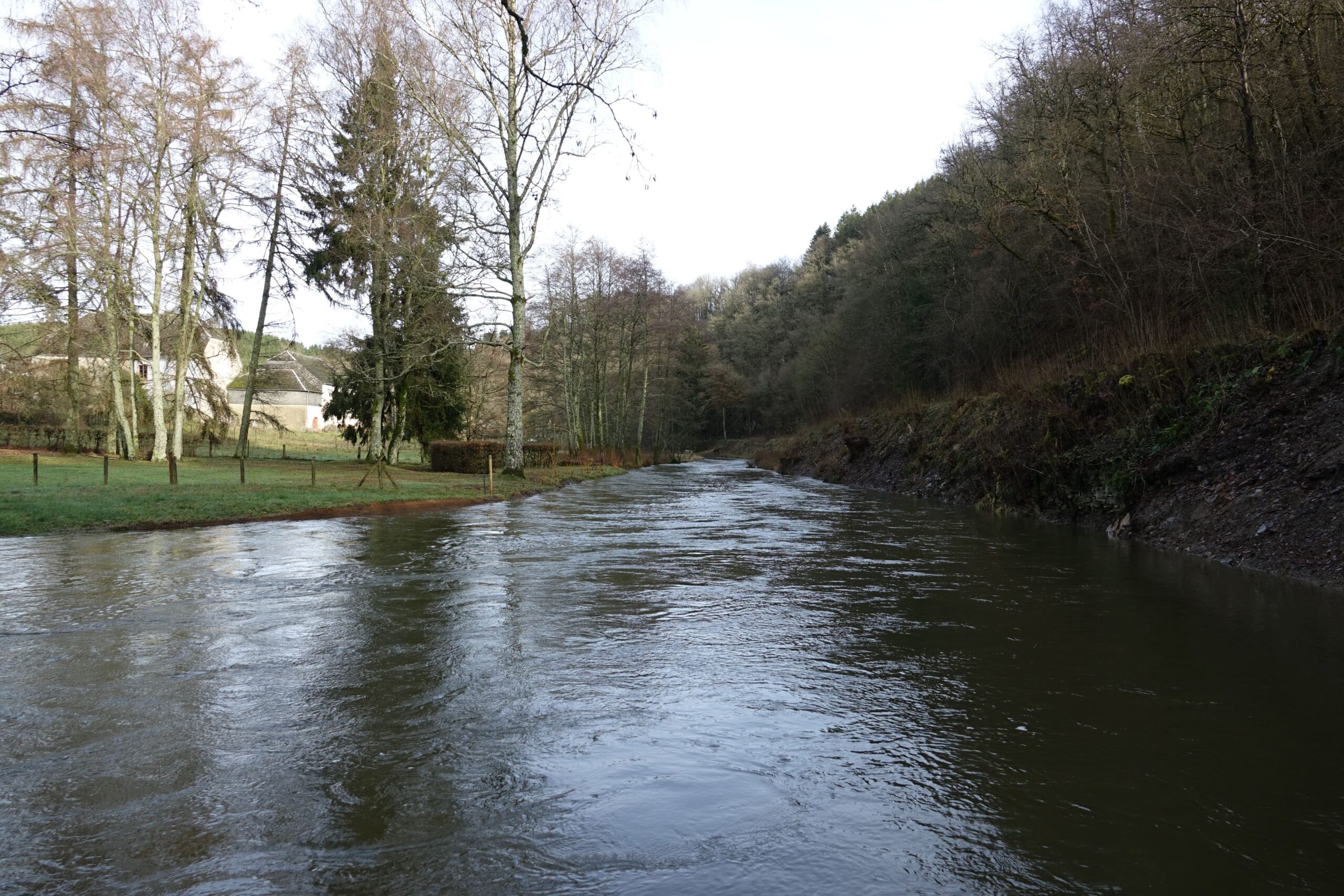Bodange Weir removal within the framework of the “Fish for Mussels” project
The River Sûre
River Sûre (Sauer in German and Luxembourgish) runs through Belgium, Luxembourg and Germany (Figure 1). It springs in the southeast of Belgium in the Ardennes, at an altitude of about 510 m. From there it flows to the east and forms the Belgian-Luxembourgish border for 13 km north of Martelange. On its path it passes through the Lac de la Haute Sure, an artificial lake located in the mountainous north of Luxembourg. It then forms the border between Luxembourg and Germany for the last 50 km of its course, passing Echternach, before running into River Mosselle at ~132 m of altitude.




